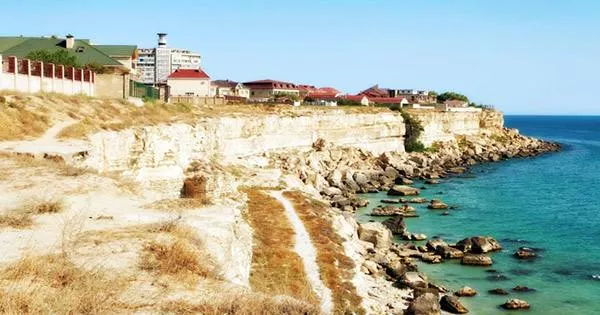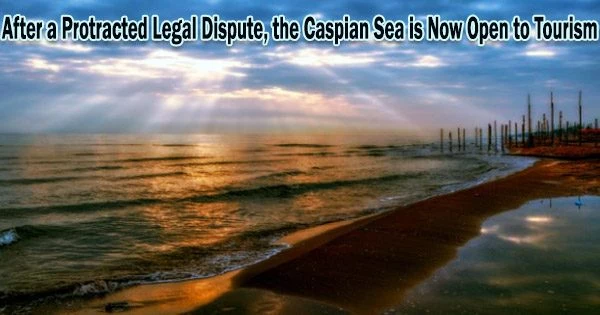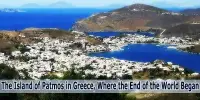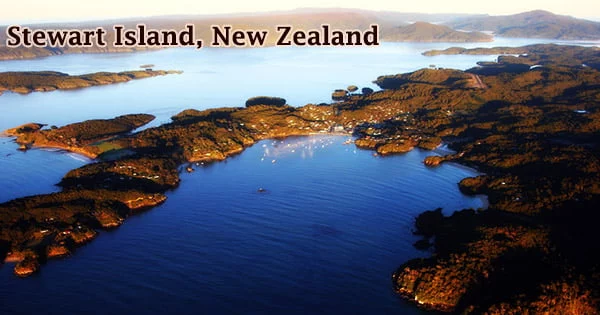The Caspian Sea is the largest enclosed body of water on Earth by area, variously classed as the world’s largest lake or a full-fledged sea. It is bordered by five countries: Russia to the north; Azerbaijan, Iran, and Kazakhstan to the south; and Turkmenistan to the southeast.
Tired of the Caribbean? Called at every Mediterranean port? Bored of the Alaskan fjords and the Baltic capitals?
Adventuresome cruise enthusiasts looking for new horizons may soon have access to a completely new body of water.
The only issue: It is a landlocked sea encircled by some of the most isolated nations on earth. But for many travel adventurers, this will be part of the appeal.
The Caspian Sea is the biggest inland body of water in the world and is famous for being the primary source of highly sought-after black caviar.
Even the five nations that share it Azerbaijan, Russia, Kazakhstan, Turkmenistan, and Iran could not agree on whether it is a lake or a sea for a very long time.
But now that the long-running legal debate over its status has been settled, luxurious cruising is permitted on the open sea.
Sea or lake?
The question of whether the Caspian is a lake or sea is about more than just semantics.
Before the collapse of the Soviet Union in 1991, only two countries bordered the Caspian Sea: Iran and the USSR.
The five nations that suddenly had a claim to these resource-rich waterways fought over its status for the following 27 years.
There’s plenty at stake: There are sturgeon that produce caviar there, and it is thought to have reserves of about 50 billion barrels of oil and 290 trillion cubic feet of natural gas. However, fishing is currently prohibited due to conservation efforts.
International law stipulates that if the Caspian were a sea, the bottom would be divided in accordance with the coastlines of each nation. Having the longest coastline, Kazakhstan would gain, while Iran, with the shortest, would lose out.

If it’s a lake, however, then the seabed would be divided equally.
In August 2018, leaders from the five nations met in the Kazakh coastal city of Aktau to sign a landmark deal which grants each country 15 miles of sovereign waters, a further 10 nautical miles of fishing area, and then common waters beyond.
The Caspian now has special legal status, so that it has still not been declared lake or sea. The issue of how to divide subterranean territory has been postponed for the time being, but it does imply that the waters are now available for additional sailing options.
A versatile ship
A brand new cruise ship, the Peter the Great, is currently under construction in Astrakhan, a Russian port city at the mouth of the river Volga.
Although particular dates have not been disclosed and itineraries have not yet been made available, the ship, which will have 155 cabins and space for 310 guests, is anticipated to launch this summer.
Its operator, the Moscow River Shipping Company is said to be planning one and two-week itineraries around the Caspian Sea, calling at ports in Azerbaijan, Russia, Kazakhstan, Turkmenistan and Iran.
The dimensions and design of this 141-meter by 16.8-meter ship will also make it possible for it to move through Russia’s network of internal waterways. This means that it’ll not be confined to the Caspian and will eventually be able to reach the Baltic and Black Seas.
The ship would alternate winter Caspian excursions with summer river itineraries along the Volga and between Moscow and Saint Petersburg, according to sources in the Azerbaijani and Russian media, despite the lack of an official sailing schedule. Additionally, it may make voyages in the Black Sea, up the Russian coast, via Georgia, and all the way to Trabzon in Turkey.
Even though there is still work to be done on the area’s overall tourism infrastructure, it is probable that this will be the first of several new cruise offers.
Russian rivers
Russian river cruises have a long history, and many regional operators travel the nation’s major rivers.
Russian rivers have even spawned a global cruise brand. Viking Cruises, now a major player name in the luxury cruise industry, traces its roots back to a small four-boat riverine operation started by a Norwegian entrepreneur in Russia in the 1990s.
Viking continues to have a strong operation in the country, with some 12,000 visitors carried through Russian waterways in 2018.
Moving into the Caspian may open up a new area of growth for the Russian cruise industry.
Although not as common as those in the open seas, cruises through landlocked “seas” (or lakes, to be more accurate) have already some tradition in more mature markets, such as North America.
“We’re seeing more and more interest in the Great Lakes and their associated ports from people who visit our site. It’s a great fit for people looking for something a little different,” says Colleen McDaniel, senior executive editor of Cruise Critic.
“Ships that sail these itineraries tend to be a bit smaller, and focus on board is heavily skewed toward enrichment, as a big draw for these itineraries is history. Ships are comfortable and feature great dining, often with local flavors, but don’t expect waterslides or rock-climbing walls. The ports are the stars.”

What’s in store for passengers?
At more than 370,000 sq kilometers (143,000 sq miles), the Caspian is considerably larger than all of North America’s Great Lakes combined, to which you can add the diversity of natural ecosystems and civilizations that have thrived along its shores. Passengers on the Peter the Great will have no shortage of sights and attractions to visit.
They will be able to enjoy the charms of the Azerbaijani capital, Baku, the largest city on the Caspian shore and its likely base port, but also ancient cities such as Derbent, at the southern tip of Russia, the deserts on the sea’s eastern shore and Iran’s subtropical riviera.
But before you get too excited, you’d better check each of these countries’ visa requirements.
In the case of Iran, for example, the US State Department has a travel advisory note advising American citizens not to visit the country at all.
Even if you are not a US citizen, a recent trip to Iran may make future visits to the country more difficult. For example, you would be denied access to the ESTA program, and you would then need to apply for a visa at your nearest US Embassy, plus you may be subject to additional scrutiny at the border (as former NATO secretary general Javier Solana found last year).
In recent years, Azerbaijan has made visa requirements simpler by establishing a quick-access electronic visa, which is accepted by around 100 countries.
















